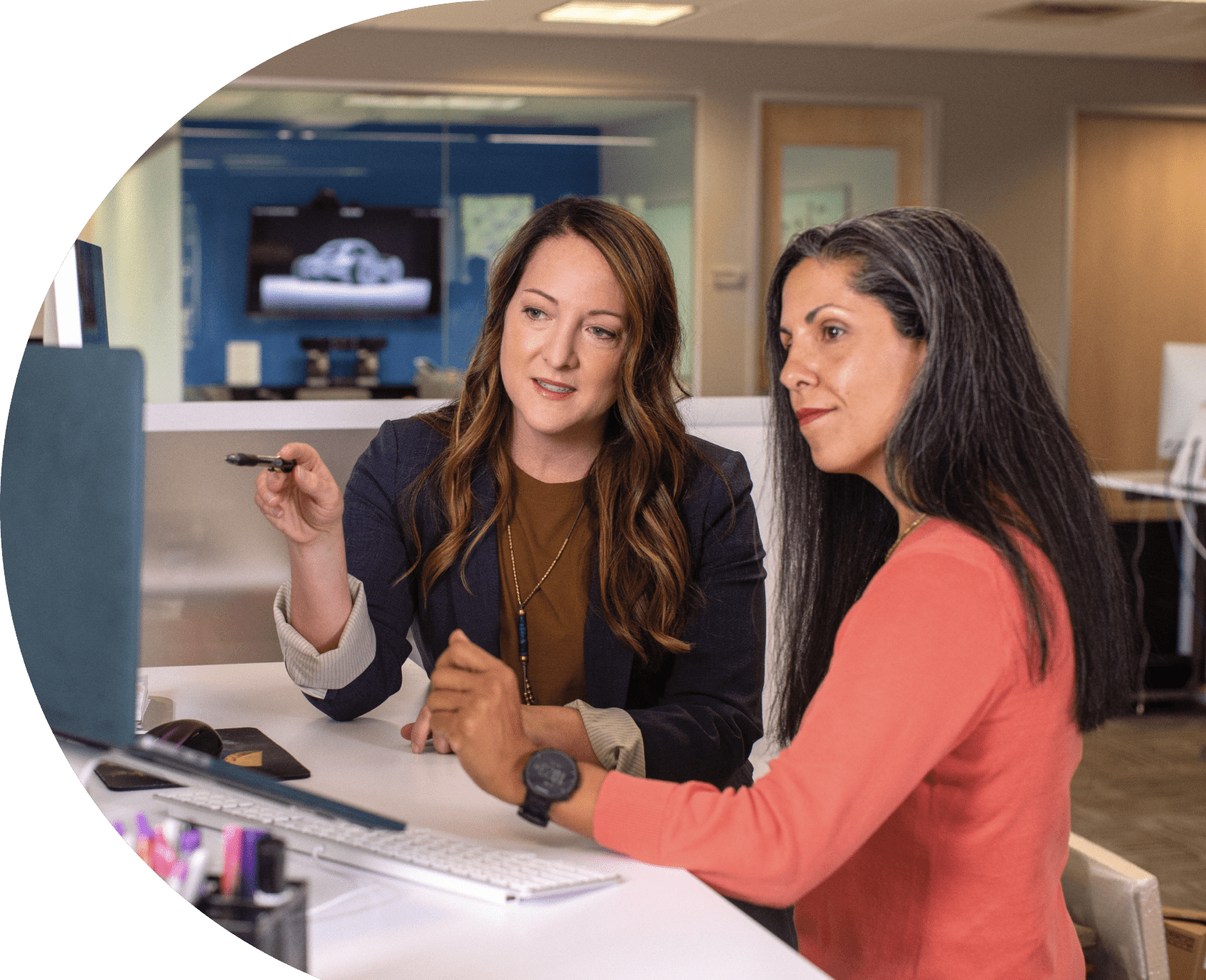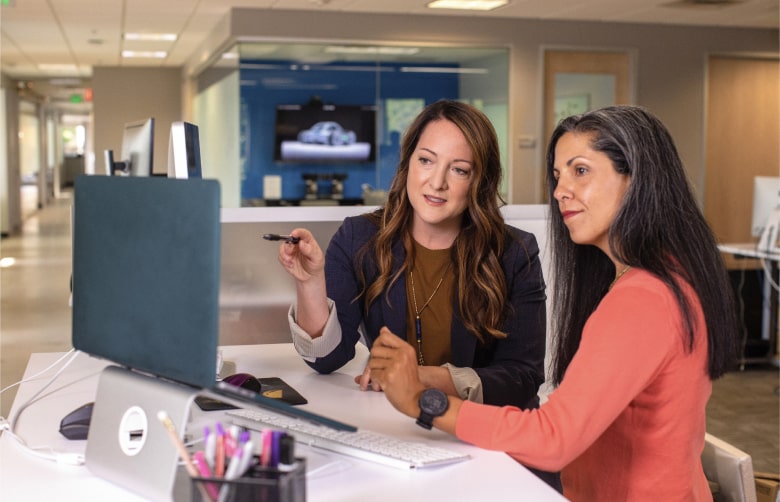This loss of female career growth will translate directly into a loss of brand competitiveness at leadership levels globally.
As we regroup from this pandemic, companies are tasked not only with recovering from this blow to the workforce, but to also design intelligent hybrid work strategies that can lead to higher-retention for the entire workforce.
Creating hybrid work models is our golden opportunity to design better workplaces, and not recreate the flawed assumptions that we’ve traditionally used to define industrial and post-industrial work: that a prototypical employee is an able-bodied male who is either single and therefore able to work excessive hours or married and has all personal & family obligations handled by a spouse at home.
Designing work around this model has had a negative impact on overall employee retention as workers who have been held to these unrealistic expectations eventually burn out, quit, and/or bounce between companies looking for better work environments. Worse, these old-fashioned assumptions are a core factor in creating the contemporary difficulties that all leading employers now face in diversity sourcing, diversity hiring, and retaining a robustly diverse workforce.
When it comes to women of color in the office workforce, a 2018 whitepaper from the National Partnership for Women and Families documents:
“Caregiving is a major part of life for millions of women, with women of color and immigrants taking on a disproportionate amount of both paid and unpaid family caregiving. More than 25 million women – almost one in seven – provide care to family members or friends.
The average family caregiver is a 49-year-old woman caring for her mother. She typically works full-time as well as providing caregiving support. Many of these women (37 percent) are part of the sandwich generation, providing care to both aging parents and children living at home.
Households of color are more likely than white households to be multi-generational, which suggests they are more likely to have elder care responsibilities.”
Though the pandemic has made the flexibility of working from home more of a reality for some office workers with some positive upsides such as more time with family and more time for health and wellbeing due to lack of commute and similar factors –working women, especially working women who are also caregivers, have been at a breaking point when it comes to balancing work and home life.
At Included.ai we support companies in centering the experiences of women of color, who are more frequently engaged in multi-generational care within their family.
We need to provide more flexible, intelligent, and inclusive models for work. Inclusive workplaces are great for ROI, resulting in less attrition, higher productivity per worker, greater creativity, and a more competitive brand overall.
Here are several key actions employers should consider when undertaking this new design:
1. Provide Flexibility
The Society for Human Resource Management (SHRM) and Perceptyx surveyed a majority of women who changed their return-to-work preferences from six months ago—48 percent have become much less or somewhat less likely to want to return to the physical workplace full time. Only 26 percent said they are more likely to want to do so.
Giving flexibility in both work hours and work location is a successful approach that companies are using to retain and attract women. For women who are juggling multiple responsibilities, the idea of a flexible schedule is very appealing. It shows that employers trust that their employees can get the work done outside of a traditional work schedule as well as understand the personal responsibilities that fall on caregivers outside of the workplace.
2. Childcare Options
Notably, 23 percent of women (compared to just 13 percent of men) with children under 10, have considered leaving the workforce entirely during the pandemic, citing their primary reason as childcare.
Not only is childcare is expensive, but many cities also suffer from childcare deserts, where there just aren’t enough childcare openings for infants and toddlers. This presents a big problem for women who are being asked to physically return to work.
While employers cannot afford to pay the total cost of childcare, there are ways to help. While these benefits can help all employees, working mothers have the most to gain from companies making these options available. Employers can consider offering subsidies, to full-time employees, in order to supplement the cost of childcare. They can provide support services in order to help parents find nearby childcare options.
Depending on the nature of the corporation, hosting licensed childcare on site can be an option as well. Other incentives include offering paid “caregiver leave” in the event that the childcare center has to unexpectedly close due to a Covid-19 outbreak.
3. Get the Company Leaders on Board
Christy Pambianchi, chief HR officer at Verizon said, “we can no longer ask moms to choose between their family and work or make their career expendable in a crisis.” Leaders need to understand that old structures and policies may not work in our “new normal.” When considering the future of work, there needs to be a clear and impactful culture of support for female employee career growth, consisting of both male and female leaders. This culture of support can be especially beneficial to Black women, who are already facing barriers in the workplace due to microaggressions and unconscious bias.
When considering how to uplift women in the workplace, companies need to prioritize diversity, equity, and inclusion goals and examine historical data from these areas. Companies should have clear, organized, and continuous feedback and communication, with all levels of staff, to see where they are excelling and where they need to improve. Employers benefit from systems that foster a sense of community, such as employee resource groups (ERGs) geared towards women of color, working mothers, single working mothers, and working women who are caring for their parents or other extended family members.
4. Take Steps to Minimize Gender Bias
The article, “Women in the Workplace 2020,” states that “the pandemic may be amplifying biases women have faced for years: higher performance standards, harsher judgment for mistakes, and penalties for being mothers and for taking advantage of flexible work options.” During the pandemic, these biases can be showing up in different ways, such as assuming a woman’s work performance is going to be less because you see her children in the background of a zoom call. Since the employer is seeing the employee less, there is a higher risk of unconscious or conscious bias setting in.
It is important to make sure that companies are aware that such biases may exist and take the necessary steps to address them head-on. Work with your Chief Diversity Officer or HR division to contract out unconscious bias training for all employees. Monitor the data for promotions and pay raises for women. Also, track the data for hiring and furloughs. Use this information to steer your efforts in how you recruit, train, and retain women employees.
When work is designed in a more intentional way, the future of work for the entire employee population becomes more promising. These steps provide a pathway for an inclusive and high retention work environment by enabling women, women of color, and other employees with higher rates of caregiving responsibilities to stay with their organization long-term. This benefits the entire workforce.












